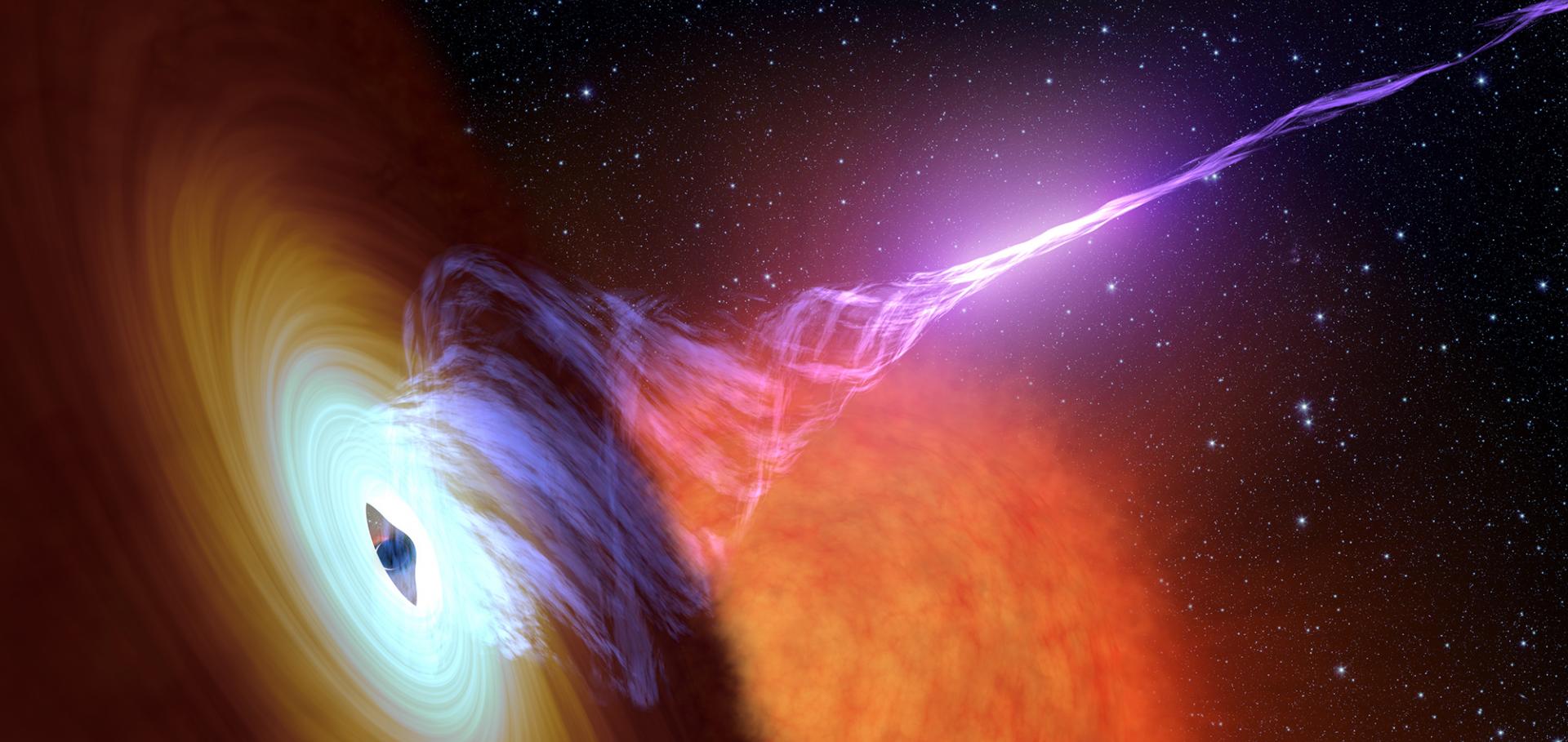Jet trails and mach cones: The interaction of microquasars with the interstellar medium
Astrophysical Journal 742:1 (2011)
Abstract:
A subset of microquasars exhibits high peculiar velocity with respect to the local standard of rest due to the kicks they receive when being born in supernovae. The interaction between the radio plasma released by microquasar jets from such high-velocity binaries with the interstellar medium must lead to the production of trails and bow shocks similar to what is observed in narrow-angle tailed radio galaxies and pulsar wind nebulae. We present a set of numerical simulations of this interaction that illuminate the long-term dynamical evolution and the observational properties of these microquasar bow-shock nebulae and trails. We find that this interaction always produces a structure that consists of a bow shock, a trailing neck, and an expanding bubble. Using our simulations to model emission, we predict that the shock surrounding the bubble and the neck should be visible in Hα emission, the interior of the bubble should be visible in synchrotron radio emission, and only the bow shock is likely to be detectable in X-ray emission. We construct an analytic model for the evolution of the neck and bubble shape and compare this model with observations of the X-ray binary SAX J1712.6-3739. © 2011. The American Astronomical Society. All rights reserved.Detection of radio emission from a nova-like cataclysmic variable: Evidence of jets?
Monthly Notices of the Royal Astronomical Society: Letters 418:1 (2011)
Abstract:
Jets have been detected in many accreting compact objects, and recently indications for jets have finally been found for transient cataclysmic variables (dwarf novae). However, so far, there have been no convincing reports of radio emission from white dwarfs undergoing stable disc accretion at a high rate, the so-called nova-like variables. Here, we present the first reproducible radio detection of a nova-like cataclysmic variable. The accretion rate and the distance of the detected source V3885 Sgr are comparable to the dwarf nova SS Cyg during its plateau phase. The detected radio emission is also of a similar level, although the source seems to show a steep spectrum. Besides V3885 Sgr, we have also observed IX Vel as well as reanalysed the available data for AC Cnc. Due to dynamic range limitations for IX Vel, we were not able to reach the required sensitivity and only obtained an upper limit. For AC Cnc we cannot confirm the previous detection. We discuss the detection of V3885 Sgr in the context of other types of accreting objects and conclude that the most likely source of the radio emission is optically thin synchrotron emission originating in a jet. Thus, tentative evidence for jets has now been found in both steady and transient CVs, making a universal connection between disc accretion and jet formation possible. © 2011 The Authors Monthly Notices of the Royal Astronomical Society © 2011 RAS.Millimetre observations of a sub-arcsecond jet from Circinus X-1
(2011)


